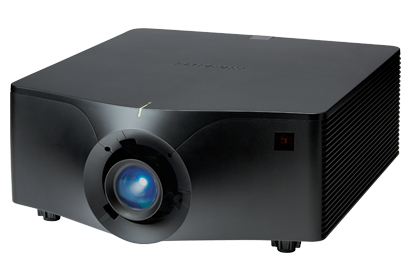Stage Audio Works, formula D, RenderHeads
King Abdullah University of Science and Technology, Saudi Arabia
Museums & science centers
Christie GS Series, Pandoras Box media server, Widget Designer, Air Scan
MOSTI Museum at KAUST
Photo credit: Stage Audio Works (Pty) Ltd.
With a growing community of 7,000 residents from more than 100 countries – situated on an impressive campus spanning 8,900 acres – The King Abdullah University of Science and Technology (KAUST) in Saudi Arabia is a destination for scientific and technological education and research. This concept of a central beacon of scholarship was inspired by the legacies of the Houses of Wisdom – prestigious centres of learning which sprang up through the Islamic world during the first Golden Age of Islam (650-1650), designed for furthering the advancement of knowledge. KAUST aims to rekindle that approach of a flourishing hub to drive future discoveries, while also acknowledging the many great teachings of the past at its own museum located on site.
The Museum of Science and Technology in Islam (MOSTI) celebrates many of the Islamic world’s stunning scientific achievements. Divided into seven zones, the museum reveals contributions made in technology, astronomy, chemistry, mathematics, life and environmental sciences, art and architecture. The Muslim scholars cited include great scientists, inventors, engineers, mathematicians and teachers of that time, such as Jabir ibn Hayyan, Abbas bin Firnas, al-Kindi, al-Razi, al-Jazari and Taqi al-Din.
Taking museum technology into a new age
With the museum beginning to show signs of age, formula D_, a specialist in impactful visitor experiences, secured a tender for the technological curation and refurbishment of MOSTI, which had been last updated in 2009. A complete overhaul of the audiovisual equipment was required to take advantage of the latest technologies and to deliver a modern storytelling experience. formula D_ contracted Stage Audio Works (SAW) to specify, supply, and integrate the equipment. RenderHeads Limited created all the custom-made software used in the exhibits.
“Everything was running on analogue VGA, it had touch screens connected with RS232 cables, and the projectors had been in place for over a decade, so it seemed like the right time for a refresh,” says Nathan Ihlenfeldt, chief technology officer at SAW. “Our goal was to modernize all the technology and create a platform that could easily be updated and changed in line with the vision of the museum. Most of the content and exhibits remain the same, but all the technology was replaced from start to finish. Christie products offer good value and we have a lot of experience with Christie and its Pandoras Box solution. We’ve executed a couple of projects with similar equipment, so it’s something that we know and trust.”
Upgrading visuals with laser
MOSTI was outfitted with 13 Christie GS Series 1DLP® laser projectors throughout the space, replacing lamp-based Christie projectors which were still working when taken out of use. A range of different lenses were used, as dictated by the available space and distance to the projection screen or object.
The GS Series projectors are driven by a Christie Pandoras Box media server, which powers the content across various exhibits. In an object theatre zone – one of the larger interactive exhibits – three projectors are blended to deliver a short presentation about advancements in chemistry, providing a multi-screen immersive experience. In another area, content is mapped onto objects including a sphere. Projectors were installed discreetly up high to ensure the technology remains unobtrusive.
A further exhibit makes use of Christie AirScan touch-free interactive technology, where visitors are invited to wave their hand over stickers, which triggers an audio file to elaborate on the story, furthering the immersive experience. A total of 40 touchscreen panels were also installed throughout the space as part of Formula D’s set designs, providing additional interactivity.
Futureproofing history with flexible and efficient AV
The entire installation is now configured with HDBaseT using cat6 cable to allow for complete control of video. Other AV elements including speakers are all controlled via IP. The substantial network upgrades have simplified day-to-day operation and maintenance, and provide a backbone to allow for easier development should the museum wish to change its setup in future. The server room has also been streamlined, reduced from a total of 11 server racks to just four – which delivers lower power consumption. It runs on approximately 1/8th-1/10th of the power consumption of the previous system.
The Stage Audio Works team were on site for approximately nine weeks to complete the installation, but the project was hampered by public health protocols during 2020 and 2021, delaying its official opening to June 2022. The system now provides a leaner, more energy efficient solution designed to inspire the next generation, with strong network elements to enable future updates to the museum as and when necessary, contributing to KAUST’s vision of establishing a House of Knowledge.
“Overall, KAUST MOSTI was a very successful installation,” adds Ihlenfeldt. “Aside from some unavoidable delays caused by COVID restrictions, everything went to plan, from the design stage through to the implementation and maintenance. We’re looking forward to what the future holds for our foray into the Middle Eastern markets.”







